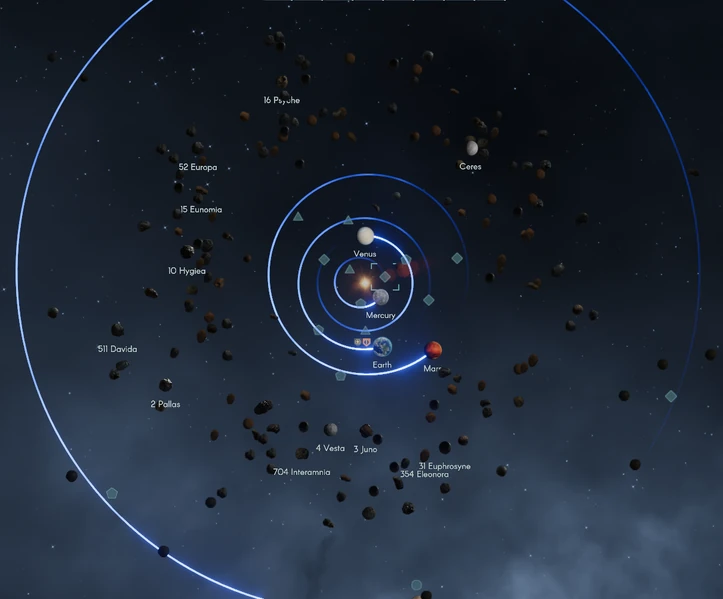Solar System
(The content of this page is based on Terra Invicta Dev Diary #12: The Solar System as well as user experience from Terra Invicta's Demo version.)
Introduction
The Solar System modelled in Terra Invicta encompasses real-life orbital bodies (planets and moons) as well as the major present asteroid and planetoid bodies. Each body has simulated Keplerian orbits which can significantly affect gameplay.
Bodies across the Solar System may be colonized and developed by factions as the game progresses, leading to rapid industrialization of space which forms a core component of the game. All bodies with available sites for base construction can be probed in order to see their existing resources, and be exploited. Orbital stations can also be constructed around bodies.
Terra Invicta models the larger bodies in the System up to roughly 50 times the distance of the Earth from the Sun. This includes much of the Kuiper Belt and the group of icy bodies orbiting beyond Neptune.
The Solar System also includes Lagrange Points as locations fleets may travel to and Habs be constructed at. These are stable anchorages created by the confluence of gravity between two bodies and marked on the map with geometric shapes.
System Size Configuration and Space Objects
The amount of bodies in the system is variable, configured at the start of a campaign through the setup menu. Four setups are available for the player to choose from:
-Full Solar System - 350 Space Objects -Medium Solar System - 250 Space Objects -Light Solar System - 110 Space Objects -Minimal Solar System - 70 Space Objects
While System size alters the availability of in-game resources, the main purpose of this customization is game performance. Changing the size of the system may also affect gameplay significantly however because of the different interactions and expansion approach the AI may carry out.
Further detail about space objects and their properties can be found in the Celestial Bodies page.
Space Exploration and Colonization
Interacting with different sections of the System is restricted to the player mainly by technology. At the start of the game any faction is able to interact with Earth and her orbits. Probing other bodies for resources as well as constructing Habs requires different technologies in order to have segments of the system available to humanity, or a vessel that can travel to a given place and interact with it.
The basic exploration techs must be researched on the global research tree, and they grant probing and construction access to the Moon, Mars, the Asteroid Belt, the Inner Planets, Jupiter and Saturn for each corresponding tech. The use of Lagrange Points in given locations of the System is also restricted to these technologies.
Hab interactions in the System
Habitats, both orbital and ground bases, may be set up as soon as the technology requirements for a particular section of the Solar System is unlocked; though ground based Habs will typically require prior probing of the Celestial Body.
Once set up, no further restriction other than specific projects limit the construction and expansion of a hab. Further reading on modules and interactions can be found here.
Ship Interactions in the Solar System
Orbital bodies provide an important role for spacefaring vessels when travelling.
Depending on the Delta-V of a vessel, travel might be carried out by "hopping" between bodies for resupply, thus making their position crucial, while at the same time several manoeuvres such as aerobraking and other utilizations of celestial bodies to "pivot" on a journey can be enabled by the player when travelling in space and connecting with a target. This leaves the player with an array of options for travel and base planning when expanding or pursuing the factions' interests.
 Hooded Horse Wikis
Hooded Horse Wikis
